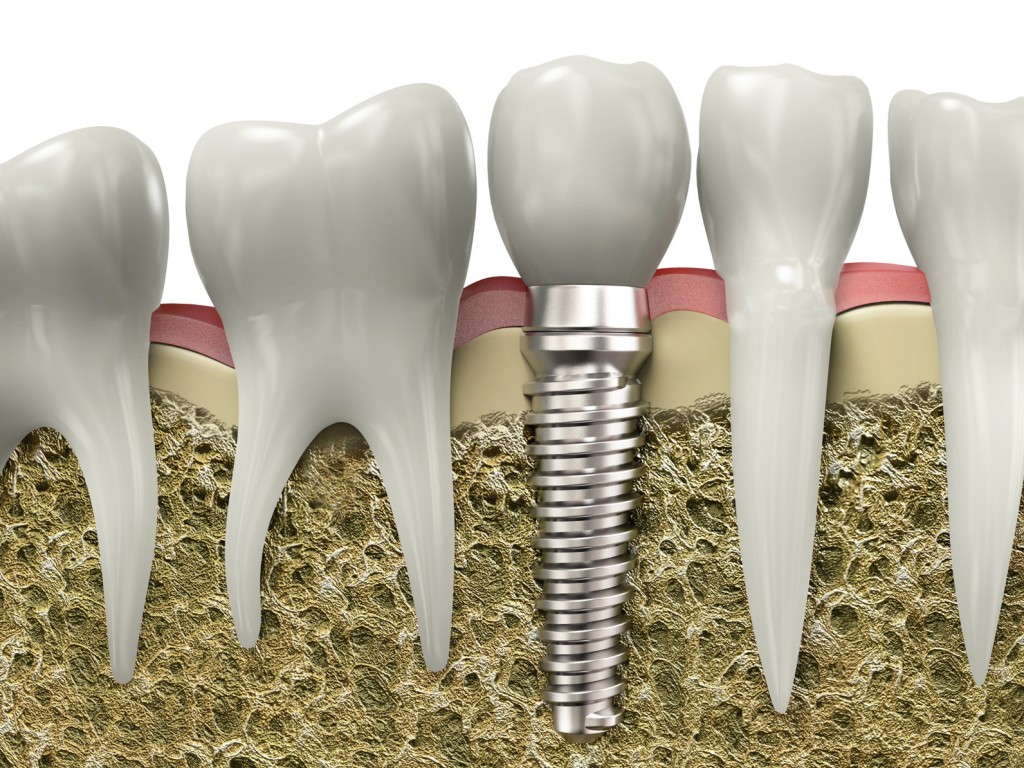Dental implants are a great way to replace missing teeth and also to provide a fixed solution as an alternative to having removable partial or complete dentures. Implants can also provide excellent support and stability for these removable dentures in some cases.
Dental implants are artificial roots, usually made of titanium, that are surgically placed into the upper or lower jaw bone by a general dentist or specialist. The implant mimics the natural root of the tooth which serves to hold the crown of the tooth in place and to keep the volume of bone stable. As with any bone in the body, if it is not used it loses its volume, it starts to shrink. This shrinking is what evolves into a profile where the nose and chin are closer together, giving a sunken in, aged look. Keeping the bone volume of the jaws may contribute to a younger looking, more confident appearance.
Dental implants are very strong, stable, and durable, but on occasion, they will have to be re-tightened or replaced due to normal wear.
Reasons for dental implants:
- Replace one or more missing teeth without affecting adjacent teeth
- Restore your confident smile
- Restore chewing, speech, and digestion
- Restore or enhance facial tissues
- Support a bridge or denture, making them more secure and comfortable
- keep the volume of bone intact
What does getting dental implants involve?
The process of getting implants requires a number of visits over several months.After deciding that an implant is right for you, X-rays and impressions (molds) are taken of the jaw and teeth to determine bone, gum tissue, and spacing available for an implant. While the area is numb, the implant will be surgically placed into the bone and allowed to heal and integrate itself onto the bone for up to six months. Depending on the type of implant, a second surgery may be required in order to place the “post” that will hold the artificial tooth in place.With other implants the post and anchor are already attached and placed at the same time.
After several weeks of healing, the artificial teeth or crowns are made and fitted to the post portion of the anchor. Because several fittings may be required, this step may take one to two months to complete. After a healing period, the artificial teeth are securely attached to the implant, providing excellent stability and comfort.
You will receive care instructions when your treatment is completed. Good oral hygiene, eating habits, and regular dental visits will help to maintain your new implant.

